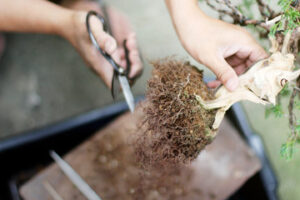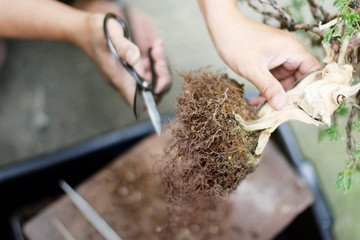Root pruning is an important part of repotting a plant. It can encourage more root growth and create a thicker mass. It also allows a tree to focus its energy on root growth instead of producing more leaves. Ultimately, this is beneficial for the health of the tree. But when is root pruning necessary? This article explains why you may need to perform root pruning on your plant.

It is important to know the difference between pruning the roots during dormancy and growth. While you might not have to cut the roots to encourage new growth, pruning them during dormancy can help the tree grow healthy feeder roots that can withstand transplantation. The most effective way to prune a tree is while the plant is dormant, so as not to damage the tree. You can also add a layer of mulch to protect the pruned roots from the elements.
In addition to supporting the tree, roots allow it to absorb water and nutrients from the soil. While most trees have long branches to anchor themselves and support their crown, some are slow-growing and can benefit from root pruning. Root pruning can also help a tree bloom more profusely by forcing a plant to produce more flowers. A trimmed tree will produce flowers and seeds. The process is relatively painless and can even be performed by the homeowner.
If you have a garden that has some weeds, you may want to consider root pruning. Not only does it encourage new feeder roots, but it also reduces transplant shock. The proper timing depends on the size of the root ball. The bigger the root ball, the more roots you will have to prune. You can start pruning in the spring or summer. However, consider that larger plants may require more time to establish and will need to be watered more during dry spells.
For some plants, trenching is necessary to increase soil quality. To do this, dig a trench around the plant, and fill it with rich organic soil. If the plant has been in the same location for several years, trenching is an excellent method. Trenching can be done all the way around or part of the way around. It is also a good idea to do trenching later in the season. Make sure that the trench corresponds to the outer edge of the future root ball.
If you have multiple plants, root pruning is a great way to control the size of the plant. Properly pruned roots will be smaller and will increase the success of your transplant. Root pruning is an important part of growing bonsai. It is also an important part of the Bonsai training process. Just remember that roots are fragile and need to be cleaned carefully before you use them. It is also important to keep the roots healthy to prevent your plants from suffering from disease later.
While root pruning is a great way to stimulate growth in a tree, you should know that it can also be harmful to the plant. Taking out roots larger than an inch will damage the tree and cause it to fall over. This method is best left to professional arborists. It is also important to consult with the City arborist before you begin pruning. If you are planning to do this work yourself, you may want to use sharp tools.
In general, you need to prune your plants regularly. This will keep them healthy. If you don’t prune them often, they may die. Therefore, it’s best to do them every two or three years. If you’re unsure of when to prune, read the instructions carefully. Also, be sure to prune if your plant has become root bound or stressed. If your plant has not been pruned yet, you may want to consider root pruning every couple of years.
There are several reasons why root pruning is essential. One of these is to promote a better fruit set. Secondly, root pruning helps to eliminate awkward roots that are too close to the tree trunk. Moreover, it also helps to create a better root system. In addition, it will eliminate awkward roots that block the supply of essential nutrients to the tree. Aside from this, root pruning also increases light penetration in a tree. The best time to prune your tree is before the fruit ripens.

